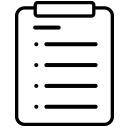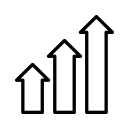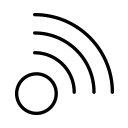Mangifera indica (of the family anacardiaceae) is the botanical name for the common mango, with mangifera being the family of plants which provide fruits referred to as mangoes. Mangoes overall are at times called "the king of fruits".[1]
At times other fruits may be erronously called mangos due to visual or culinary similarities despite not being in this family, irvingia gabonensis (African mango) being an example.
One particular molecule known as mangiferin (synonymous with C-glucosylxanthone), a xanthone, was named after it's discovery in mangos where it exists in both the fruits[2] and leaves.[3] It is not necessarily unique to mango fruits as it can be detected in coffee leaves[4] and honeybush,[5] but due to its various mechanisms it is thought to be the major bioactive in mango that differentiates it from other fruits that do not contain it.
One other supplement that contains appreciable levels of mangiferin is salacia reticulata.
Mangifera indica refers to the common mango which can be bought in stores as a food product, although this particular fruit also has the leaves from the plant used in dietary supplements. Both the fruit and the leaves are thought to confer benefits to health due to having similar components (albeit in differing quantities)
Mango fruits (mangifera indica unless otherwise specified) contain the following noncaloric bioactives:
- Mangiferin at variable concentrations, with some sources citing up to 0.2mg/g dry weight,[6] slightly above 13mg/g dry weight,[7] or undetectable[6]
- Carotenoids including α-carotene, β-carotene, cryptoxanthin, and zeaxanthin with no detectable lycopene and drastically lower levels in dried fruit relative to fresh[8]
- Gallotannins at lower concentrations (0.2mg/g dry weight)[9]
Lupeol, found in the peel, is undetectable in the pulp.[7]
The fruit (pulp) of the mango has a surprisingly low concentration of the major bioactives, as it seems to be concentrated in the peel of the fruit and other parts of the plant (leaves and kernels). Consuming the entire fruit may still confer some effects however (due to more overall mass ingested)
Other parts of the mango plant (mangifera indica unless otherwise specified) contain:
- Mangiferin in the peels (4.94-15.23mg/g), kernels (6.40-8.98mg/g), bark (12.33-18.33mg/g), and leaves (36.9-67.20mg/g favoring young leaves),[3] thought to be the major bioactive compound
- Isomangiferin in the bark only (0.79mg/g) and 6-O-galloylmangiferin in the bark only (1.67mg/g)[3] and possibly also in a gallated form[9]
- Lupeol (peels) at less than 1mg/g dry weight[7]
- Gallic acid in low levels in the bark (0.24mg/g) and leaves (0.43-3.49mg/g favoring young leaves)[3] with higher levels of other gallated molecules such as methyl gallate (up to 17.95mg/g in young leaves, 12.68mg/g in kernels, and 15.46mg/g in peels), tetra-O-galloylglucoside (7.22mg/g in the peels), and penta-O-galloylglucoside (up to 23.81mg/g in the young leaves, 17.71mg/g in peels, and 50.03mg/g in the kernels)[3]
- _Maclurin_itself[9] and in the forms of 3-C-β-D-glucoside (1.97mg/g in the peels and 0.63mg/g in young leaves) and gallated versions of the aforementioned glucoside present in peels almost exclusively (3.37-4.05mg/g)[3]
- Quercetin pentosides in the leaves at 1.33-4.93mg/g favoring young leaves[3] with some detectable in the kernels and peel (likely at lower concentrations as to be undetectable[3]) in the forms of 3-O-galactoside, 3-O-glucoside, and 3-O-xyloside[9]
- Kaempferol in the peels and kernel in the form of 3-O-glucoside[9]
- Isoquercitrin isomers in the leaves only, 2.12-11.42mg/g favoring young leaves[3]
- Iriflophenone as 3-C-β-D-glucoside (8.30-118.04mg/g in the leaves favoring young leaves and 2.05mg/g in the peels and bark) and gallated versions thereof present at lower concentrations in the leaves (around 1.16-7.45 in young leaves)[3]
The total phenolic content is greatest in leaves, with young leaves generally having more of all bioactives relative to older leaves, with lowest concentrations in the peels of the fruit and bark of the plant the fruit is borne from.[3] The quantities of bioactives seems quite variable, most notably iriflophenone 3-C-β-D-glucoside being reported as low as 8.30mg/g in one cultivar's old leaves and as high as 118.04mg/g in another cultivar's young leaves.[3]
As a general statement the major bioactives in mango leaves (most common supplemental form) seem to be mangiferin and iriflophenone quantitatively speaking, while the phenolic acid known as gallic acid itself is present in low levels but is also conjoined to many other molecules (ie. gallated) in appreciable quantities




